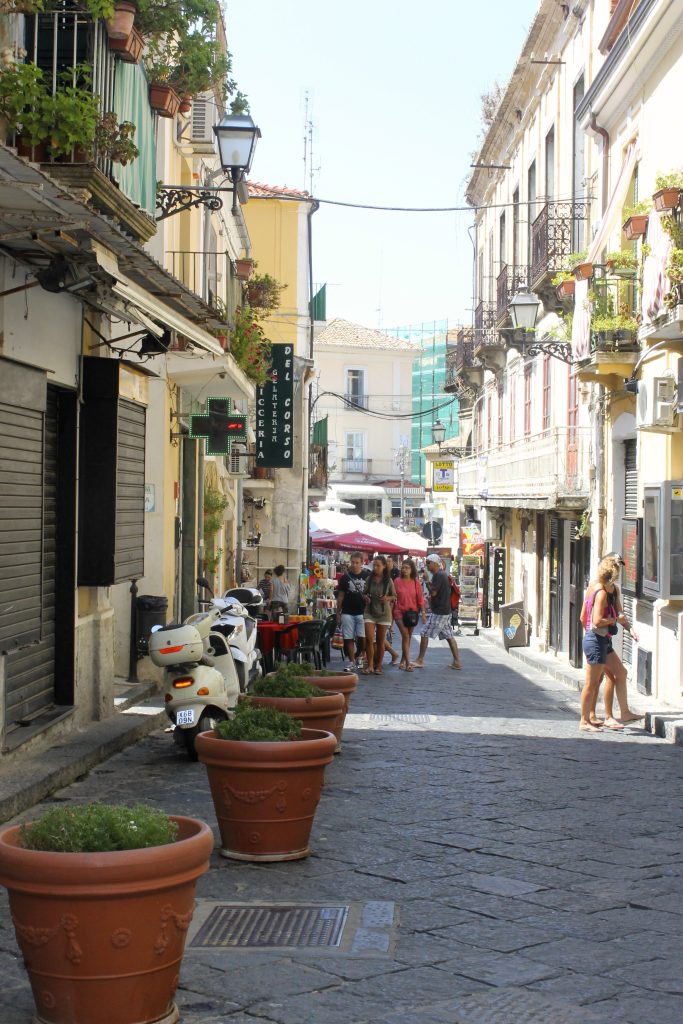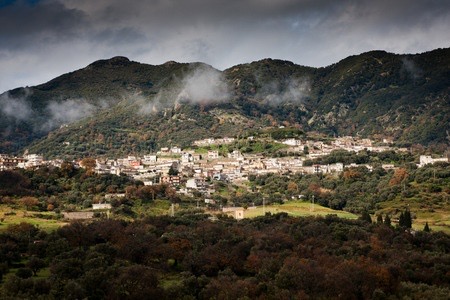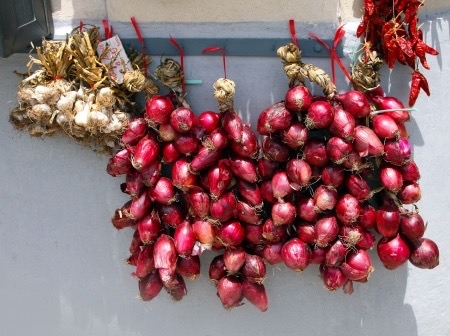Pizzo; It’s All About History and Charm
As a teenager, many years ago, I had visited Pizzo with my father. Then, to my greatest delight, I had found a small town with a main piazza that by sundown had transformed itself into a hip and happening place for young people to meet. The summer months brought all kinds of returning families to visit the hometown, and so also came the young people. The Piazza della Repubblica metamorphosed at sundown into a lively nightspot where young men rambled in circular motion around the periphery of the square darting furtive glances at the girls huddled along the balustrade looking out to the sea. These, ostensibly indifferent to the male presence, giggled and carried on, intent on playing “hard to get”. I made friends during that short stay, and loved the exuberance and fun that Pizzo offered a young Canadian girl from Niagara Falls.

Those summer evenings invariably ended with fireworks that illuminated the night sky with diamond-like sparkles that plunged dramatically into an indigo blue sea and left sweet sulfuric vapours wafting into the night air. The euphoria was palpable; the spontaneous laughter of the young proclaimed this carefree summer happiness, and all was right with the world. These days, almost regretfully, I’d say, my tastes run to things much sweeter than a young man’s smile and the ensuing fluttering of the heart. In Pizzo, I found the one thing that will placate my sweet-tooth cravings: the best tartufo in the world!

This charming town has become THE destination for ice cream lovers of the world. Its main square, Piazza della Republica, is lined with gelaterie (ice cream parlours), each offering different versions of this delectable ice cream ball with molten lava centre and covered in cocoa, and each jealously and closely guarding their secret recipes. In fact, the Tartufo was born in Pizzo around 1943 when Prince Umberto di Savoia came to Pizzo from the Piedmont region to conduct a military inspection. The people of Pizzo, honored by this visit, prepared the best foods this area of Italy could offer. Dishes that exalted the local produce such as sun kissed artichokes, sweet and spicy peppers, succulent tomatoes, were proudly prepared and presented to the Prince. When it came to a dessert, however, nothing was worthy of visiting royalty. Something must be created to mark this special occasion, and so the local gelatieri came up with the idea that it must be something that honoured the Principe’s own home, Piemonte. They decided that they would create an ice cream that would celebrate the well-known truffle that was found in abundance in Piemonte. What the artisanal ice cream makers concocted was a combination of chocolate and hazelnut ice creams surrounding a heart of liqueur-infused fudge sauce, which they then dusted with cocoa. “In an ingenious effort to link the culinary traditions of north and south, the Calabrese [sic] invented a gelato-based version of the truffle” Layne Mosler http://www.gonomad.com/975-gelato-heaven-in-italy
On a first glance the piazza seems a sea of umbrellas that undulate gently in unison with the breeze rising from the Tyrrhenian. They are in effect a necessary protection for the outside tables from the hot Calabrian sun. The different colours of the umbrellas is the only distinguishing sign that marks the end of one ice cream parlour and the start of another one. Occasionally, the small tables are covered with pristine white tablecloths indicating that more than just gelato is served there.

A walk to the end of the square opens to the sea below, and to the Murat castle teetering above it. This is Pizzo’s other claim to fame: the Aragonese castle that gave refuge for a few days to Gioacchino Murat, King of Naples and Napoleon’s brother-in-law. An attempt to raise an army in Pizzo to safeguard his Kingdom and protect him from the approaching King Ferdinand after Napoleon had been exiled, backfired. There, he was betrayed by his own people and later executed for treason by firing squad. The castle is now the home of the Murat Museum, which houses military regalia, period dress, artillery and much more. For a nominal fee, it is quite worth visiting to relive some of Italy’s turbulent years before its unification. At specific times of the day, actors in period costume march out of the castle: there are the soldiers of King Ferdinand’s army; townspeople are crying for the death of Murat; and finally the doomed but still proud Murat himself is dragged out, disheveled and ready for the firing squad that proceeds to execute him before the surprised and amused tourists milling about.

Pizzo like much of the rest of Calabria is making a valiant attempt to break free of the shackles that have bound it for more than a century to obscurity. This is a beautiful and proud land that at one time was the home of cutting-edge Southern industries which, according to the very informative and well written Terroni by Pino Aprile, were either dismantled or allowed to go to ruin, due to the unfair competition from the North, or due to explicit decisions made by the newly formed Italian State. The metal works in Mongione, for example, and the textile industries, Aprile tells us, are among those allowed to perish or to degrade into secondary ones after the unification of Italy. Inept and corrupt government, and the omnipresent shadow of the ‘Ndragheta have suppressed the will to flourish of the Calabresi. Small communities like Pizzo, Riace, Tropea, for misdirected government funding and perhaps for a skeptical and uneasy attitude towards new possibilities, have fallen into a resigned apathy. The prospect of a potential tourist trade means nothing in these parts. The Murat castle, for example, while organized, clean and quite well maintained, still lacks in the facilities that might attract foreign tourists: the history of the castle and events and other interesting information are only posted in Italian. There is no reason, today, for a place meant to draw visitors, to not have tourist information in various languages, especially English. Places like Pizzo then, even for a lack of small amenities such as this, tend to be overlooked by the travelling masses, and get bad reviews by the few that do come. How unaware and naive this land remains! A part of me grieves over the lost opportunities for this part of Italy to become known to the world; and yet, another part rejoices at this simple and unaffected natural land that offers none of the glitz of the Italian Riviera, but only breathtaking sunsets, rugged mountains and authentic characteristic towns. Paolo Borsellino, one of the most important magistrates killed by the Sicilian Mafia, once said referring to the Mezzogiorno (southern, Italy) in general, and alluding to the constricting grip of the Mafia in particular, “one day, this land will be beautiful”. I say, that despite everything, Mafia, poverty, slow progress…this land IS beautiful. As we wander through the small vicoli (narrow streets) back to the car park, we are accosted by a diminuitive man wearing a lopsided cap over a large sun charred forehead. Behind him, taking up most of the width of the narrow lane is a 3 wheeled van. On it, he has crates of fresh black figs on display which he offers for a meagre 1 Euro. The waxy blue black skin enveloping a succulent red middle beckons invitingly. I indicate that I will have a few, and the little man proceeds to fill an old paper bag with at least 16 figs. He asks for his one euro. A little surprised, and a little ashamed that he would offer so much for so little, I hand him a 5 Euro note and tell him to keep the change. His beams a toothless smile and offers more thanks that are necessary. I walk away knowing that this indeed is a beautiful land.





0



